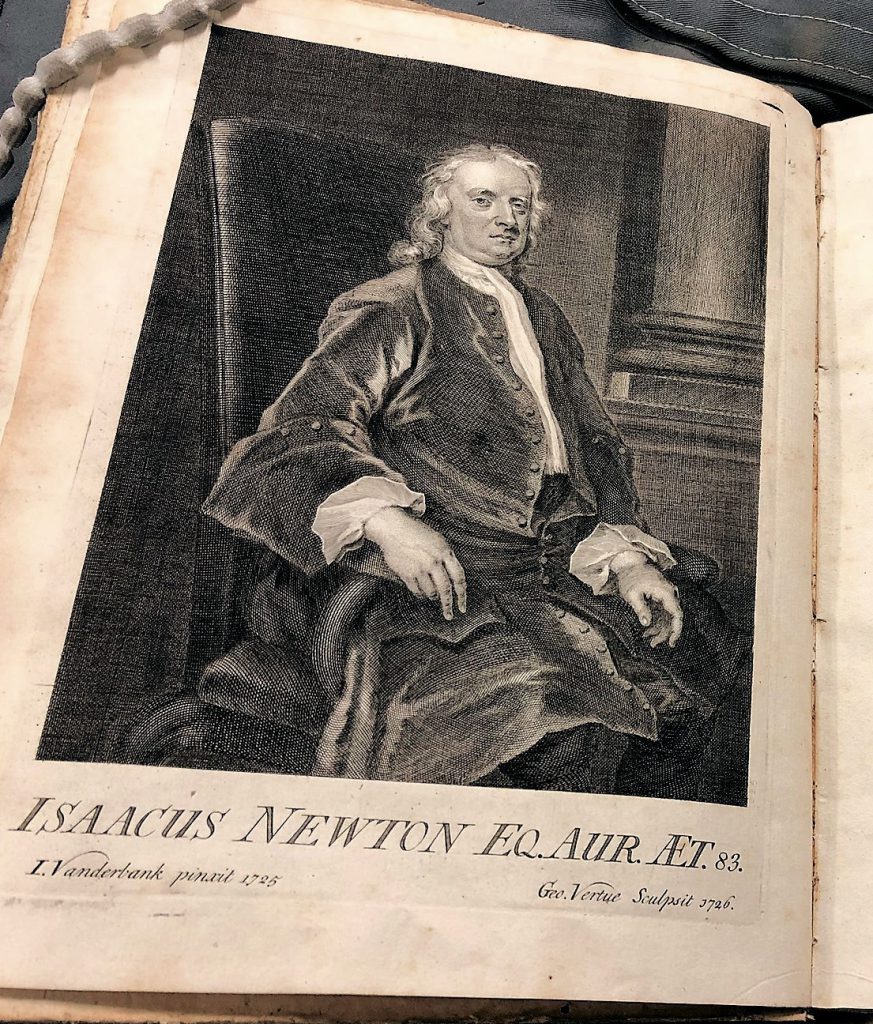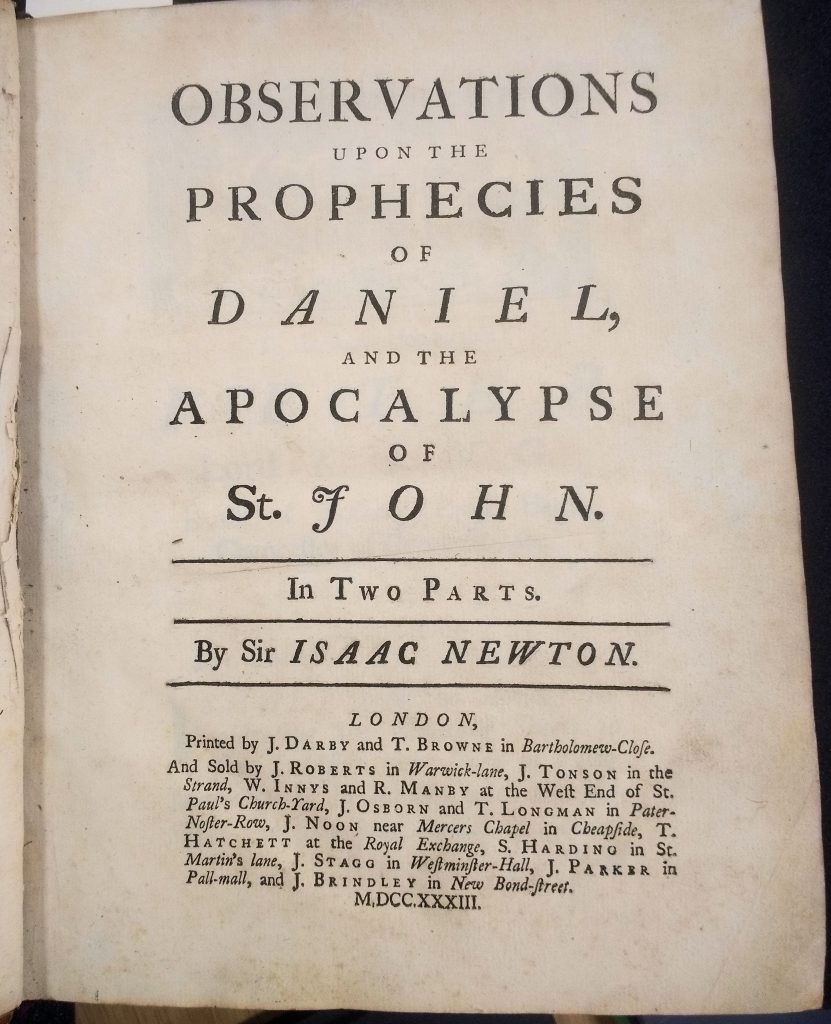This is the third in a series of posts by 2nd year History student Eddie Meehan. Eddie is working on The Grace Library of the Department of Applied Mathematics, a collection of 17th to 19th century mathematics texts, centred around the collections of Walter and Alicia Stott and Duncan C Fraser, and named after Samuel Forster Grace. The collection is rooted firmly in the city and University of Liverpool, and particularly in the Liverpool Mathematics Society and the Worshipful Company of Actuaries.

The Grace Library collection contains a wide range of volumes relating to Sir Isaac Newton, including many that were written by him. Newton is world famous for his work on physics, particularly Newtonian mechanics, but there are a range of other volumes written about and by him that are significantly less well known in the Grace Library collection. Newton’s works make up a significant part of the Grace Library collection, with 11 volumes written by Newton himself and a number of others written by others regarding Newton’s work.
The collection contains a work written by Newton named The chronology of ancient kingdoms, published in 1728, in which Newton detailed the history of various kingdoms located principally in the Near East. This involved linking various figures of Greek and Roman mythology to Biblical and historical events, and ultimately sought to prove that Solomon’s kingdom and temple were the earliest in human history. In doing this, he deviated massively from what is now accepted as Mesopotamian and Egyptian history and from the contemporary chronology of the Near East. The volume itself is part of the collection bequeathed by Duncan Fraser and named after Walter Stott, who were both Liverpool actuaries. However unfortunately it bares no other identifying provenance marks.

Another volume written by Newton is the Observations upon the Prophecies of Daniel, published in 1733. This volume is a work of theology, another departure from Newton’s more well-known works of physics and maths. The work is a collection of various notes written by Newton and published after his death by his half-nephew, Benjamin Smith, and as such is divided into two parts. This particular volume has a far clearer provenance history to it, bearing bookplates of ownership of a Rob Taylor and a John Baker, along with also being part of the Walter Stott collection.

The collection also contains many of Newton’s more well-known works, such as Opticks and Principia, along with French translations of the latter that were possessed by University College London and given out as examination prizes. Opticks bears a bookplate of Sir Ralph Milbanke. He was one of a line of baronets that formed part of the family of Ada Lovelace, a mathematician known for her work on Charles Babbage’s Difference Engine, an early predecessor to the modern computer.
Various volumes also appear that were not written by Newton, but were written about Newton. Among these are volumes that seek to analyse his work, such as Henry Brougham’s Analytical view of Sir Isaac Newton’s Principia. Brougham was a significant Whig politician of the early 19th century, who supported free trade and an end to the slave trade, but also was a well-regarded lawyer and scholar who was one of the founders of University College London in 1826. Once again, this volume was part of the Walter Stott collection donated by Duncan Fraser to the University.